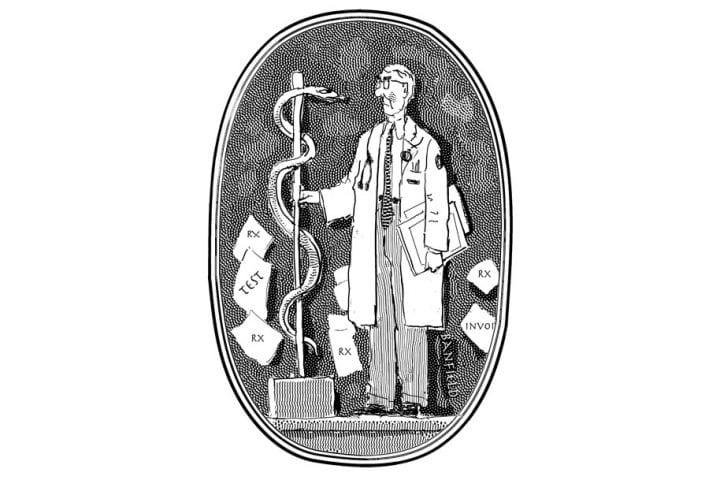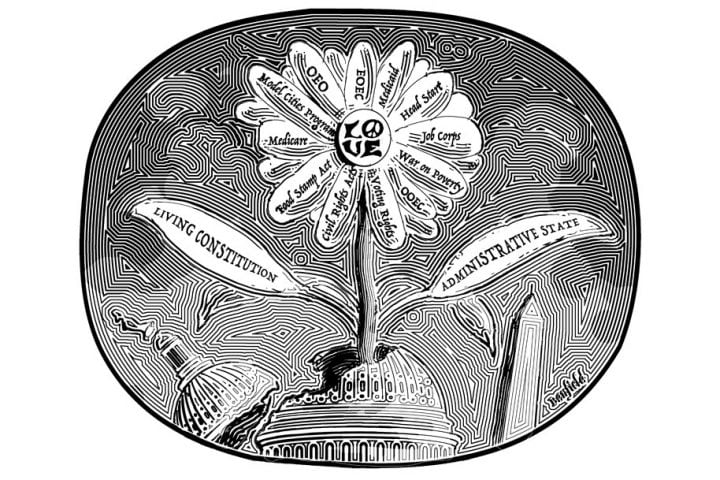Books Reviewed
Keith Whittington’s Repugnant Laws is an impressively thorough, empirical study of judicial review, from the founding to the Supreme Court’s 2017 term. The book makes for rewarding reading; the only disappointment is a too-brief discussion of what the evidence suggests about the present Court and its predicament.
The book employs a novel approach to judicial review by examining cases in which the Court upheld the constitutionality of federal statutes. It is a massive undertaking, for the Congressional Research Service only lists cases when the Court “strikes down” federal statutes, in whole or in part—not when it sustains federal statutes against constitutional challenges. (“Strike down” is an awful term of convenience. The judiciary has no such power—only the power to declare a statute cannot be constitutionally applied by a court.) Omitting “positives”—cases sustaining federal statutes—understates the Court’s role in judicial review; counting only “negatives”—judicial invalidations—overstates the justices’ role as guardians of the constitutional order against an imperious Congress.
Legal research software yielded Whittington some 10,000 potential cases, which he sifted to distinguish serious constitutional challenges from spurious attacks and judicial drive-by pronouncements. (His research is available on his page on the Princeton University website). An overly ambitious doctoral candidate might attempt such a project; the William Nelson Cromwell Professor of Politics could be forgiven if he took a pass. Then again, one would not want anyone short of Whittington’s acumen and integrity anywhere near the reading and coding of those 10,000 decisions and opinions. The reason to trust the data—the only reason—is that Keith Whittington compiled them.
He identifies 1,308 Supreme Court cases in which the constitutionality of a congressional statute was drawn into question. In 345 of those cases the Court invalidated a statutory provision or limited its scope on constitutional grounds; in 963 cases, the Court sustained the statute.
* * *
The principal reference point for Whittington’s analysis is a 1957 article by Yale political scientist Robert Dahl. Contrary to the Court’s image after Brown v. Board of Education (1954) as a heroic, powerful policymaker as well as to apprehensions about the undemocratic nature of judicial review, Dahl argued the Court could not resist America’s dominant coalitions for any length of time. Policymaking coalitions appoint judges and Justices, and surely select like-minded jurists. Thus, Dahl predicted, judicial review would be relatively infrequent and, for the most part, hit old or marginal statutes that dominant coalitions no longer cared about. The only exception was the period between 1932 and 1937 when an “old” Court directly challenged a newly dominant political coalition and invalidated several of its major enactments. But that confrontation proved the point: though Franklin Roosevelt’s 1937 “court packing plan” failed, he soon appointed Justices who supported his program.
Dahl’s article produced a gargantuan literature, to which Repugnant Laws marks a substantial contribution. Whittington distinguishes three broad juridical periods: the antebellum era, when judicial review was not uncommon but (in comparison to later decades) fairly infrequent; the Civil War to World War I, when the pace of judicial review sharply increased; and the century since, when rarely a year passed without constitutional challenges to federal statutes. The most natural explanation for this increase is that judicial review’s frequency has moved in tandem with the sheer volume of federal legislation. But Whittington notes that other factors—for example, changes affecting the Court’s jurisdiction—have played a role. And he argues—rightly to my mind—that fluctuations within those extended periods hold greater interest than the grand arc.
* * *
He generally confirms Dahl’s argument. Judicial review is too frequent to deem the Court a mere lapdog of Congress, but decisions upholding federal statutes far outnumber invalidations. As Dahl predicted, moreover, most invalidations have “struck down” old statutes. (“A great deal of judicial review,” Whittington writes, “is concerned with thwarting the will of long-gone political majorities.”) Many other “strike downs” have concerned marginal statutes or provisions. Whittington concludes—on a decidedly Dahlian note—that judicial review “is a fairly low-stakes game. Political leaders can afford to tolerate an independent judiciary with the power to invalidate statutes because the justices generally do little political damage.” And, yes, the early New Deal years really were exceptional.
All that is worth knowing. But in the present political environment Whittington’s analysis strikes a slightly discordant note. If judicial review is “a fairly low-stakes game,” why does everyone fight over judicial appointments to the point of personal destruction? Put differently, what does the historical practice of judicial review really tell us about this Court and judicial review now?
* * *
The court’s principal role has been to enforce the will of dominant national constituencies against dominant state-level constituencies, usually in the recalcitrant South. But this leaves open questions about the Court’s role vis-à-vis coordinate branches of government. Dahl assumed unified political parties, stable partisan majorities, and shared policy preferences among coalitions. That picture, Whittington writes, underestimates the fissures that have characterized our coalitions—fissures that allow courts to “make headway by advancing their own preferences within the band of indifference established by other political actors.” I suspect Dahl would have accepted Whittington’s point as a friendly amendment. The real problems with Dahl’s model lie elsewhere.
One is the common assumption that the Court, in exercising judicial review, butts heads with Congress—the ultimate home of democratic sentiment and dominant political coalitions. Nowadays, the executive is a far more usual target of judicial control, including constitutional review. The present crisis of human affairs is not between the Court and a legislature that draws all power into its impetuous vortex but between the Court and an overbearing executive. Repugnant laws are less a problem than an executive that leaps constitutional bounds.
That, Whittington might object, is a subject for another day. Fair enough (and he has written eloquently about it elsewhere). The decline of Congress as an effective policymaker, however, and the steady accretion of executive power, are bound to affect the data and analysis of judicial review. For example, the Supreme Court has rewritten entire statutes and made up heretofore unheard-of constitutional avoidance doctrines in the firm expectation that Congress can be trusted to do—nothing. (That conviction prompted the Court, sua sponte, to “fix” major portions of the Affordable Care Act and update the ancient Clean Air Act for the wholly unenvisioned purpose of climate change regulation.) Most of what one really wants to know about the Court’s role as a political actor and its relation to the coordinate branches of government is buried in a swamp of subterranean, infra- or quasi-constitutional doctrines, such as judicial “deference” or “hard look” doctrines that may green-light or, occasionally, torpedo massive regulatory programs.
* * *
A second, closely related problem is the question of what Dahl’s “dominant coalitions” tell us about the present Court’s predicament. Ours is a moderately conservative Court with no dominant political coalition behind—or against—it. Instead, Justices operate in an intensely polarized environment in which the institution that really matters—the White House—is dominated now by one party, now by the other. There isn’t anything like this constellation in the standard political science playbook. So then: does an executive-dominated, polarized, politically contested institutional environment increase the Supreme Court’s maneuvering room (because there is no dominant coalition that could retaliate)? Or does it limit the Court’s institutional autonomy, for fear that constitutional decisions regarding executive power might be viewed through a sharply ideological lens—depending on the ruling, as an abject surrender to the executive or as something close to a coup d’etat? Or perhaps because the president has a much narrower “band of indifference” than a fractious Congress?
Calls for speculation, the lawyers might say. But to my mind a little speculation, informed by historical data, analysis, and cautious comparisons, would have further improved Keith Whittington’s landmark contribution.





